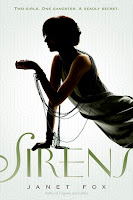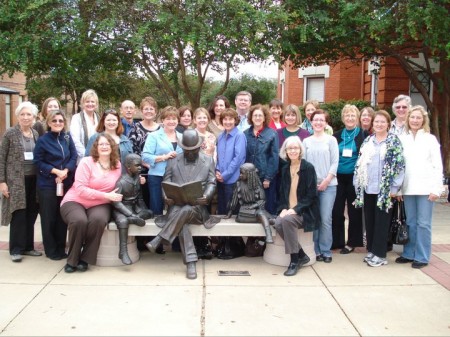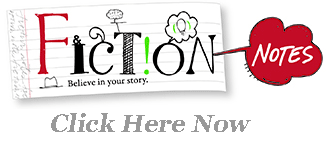By Gayleen Rabakukk
for Cynthia Leitich Smith's Cynsations
My current work in progress is a middle grade historical fantasy set in 1903.
Delving into the past has made me think about how history is presented in novels and the balance between real and imaginary.
For more insight on that topic, I turned to the authors of two of my favorite recently published books, focusing on process.
Kate Hannigan’s The Detective's Assistant (Little, Brown, 2015) is based on the extraordinary true story of Kate Warne, America’s first female detective. It won the SCBWI Golden Kite Award in 2016.
Was there a particular item, fact or event that sparked the idea for The Detective's Assistant?
KH: I was researching a story about camels in the American West in the 1850s when I came across a single nugget about Kate Warne. I read how she walked into Allan Pinkerton’s National Detective Agency in downtown Chicago, and he had assumed she was there for a secretary position. But she talked her way into a detective’s job, convincing Pinkerton she could “worm out” secrets from the wives and girlfriends of the city’s crooks and criminals.
Stumbling on this little gem, I was hooked! I dropped that camel story and ran with Kate Warne!
At what point did you start researching that? Did you start drafting a story first, or did you do research up front?
 |
| Kate's model for her main character |
The biggest research was around understanding the Baltimore Plot, which is the pivotal part of the story — the plot to assassinate Lincoln before he could be sworn in for his first term.
So the whole process was immersive. I dove in deep before writing a single word. Once I felt like I had the facts, then I began my story.
Did you continue doing research as you were writing?
KH: I’m still doing research! And the book published over a year ago! But I love this story so much, I can’t not learn more about it. I do school visits all the time, and I talk to students about it. So it’s very much in the front of my mind.
As I was writing, I would come across a question — my characters are walking down the street in 1860 Chicago, so what were they walking on? How comfortable would a train ride be in 1860? Would we ride on upholstered seats or hard wood? — and drop down another rabbit hole.
Research is never ending with historical writing!
Were you surprised by what you learned doing research? Did any unexpected finds end up becoming significant parts of the story?
KH: If you’re writing historical fiction, you’re probably a pretty huge history nerd. So digging up a juicy nugget can be a thrill! And I dug up so many!
I enjoyed researching and writing this story to a ridiculous degree!
My characters live in a boardinghouse, so getting that setting right was foremost in my mind. I read Uncle Tom’s Cabin by Harriet Beecher Stowe (1852) and Sister Carrie by Theodore Drieser (1900) (which was set a bit later but still illuminating nonetheless), just to get a sense of language of the times.
But I also plunged into nonfiction about the era, and I found a particular book about boardinghouses that was helpful. It described how incredibly cheap the managers — usually women — had to be to keep these places afloat. They were notorious for serving terrible food, which I thought could be played for a lot of humor in my book.
And this is what led to the chapter about Nell and the other residents eating a questionable meat for dinner, and Mrs. Wigginbottom getting shifty when there is talk about the orange tabby cat going missing.
Your book mixes well-known historical figures (Abraham Lincoln) with lesser-known, yet real individuals (Kate Warne) as well as completely fictional characters.
Tell us more about balancing the fact and the fiction – did you lean heavily on things the historical figures actually said? Were there some details you changed for the sake of the story? Were there some fixed points you felt couldn’t be altered?
KH: Fact and fiction! This balance kept me up at night! I agonized over being true to the players and what was on record as having happened. I visited Kate Warne’s grave site here in Chicago more than a few times, and I deeply desired to do right by this woman.
But I also worried about the reader, and I wanted to make sure that the story I was telling would hold the interest of a 21st-century American kid. So it was agony!
Pinkerton had written about the cases that involved Kate Warne, so of course I wanted to nod to those. But I took artistic license and shuffled their order, so that the culminating case is the saving of Lincoln’s life. I needed to put them in a different order to serve my story, and I had to come to terms with that decision. It took me a bit though.
Do you feel authors writing for middle grade readers have a greater obligation to present an accurate picture of a historical time period, than those writing YA or adult fiction?
KH: I very much believe authors for young readers have a greater responsibility to get historical fiction right. Because history is all new to this audience — this might be their first introduction to the Civil War, to Abraham Lincoln, to the Underground Railroad.
And if we make history engaging for them, we’re opening the doors to more exploration of our past, to creating more history lovers.
It’s a responsibility I take pretty seriously. Which is why I tend to research my books to death!
Have you gotten any feedback from history or social studies teachers? Or any school visits or other presentations aimed specifically at the history aspect?
KH: Yes! And it’s been so great! I’ve gotten tremendous feedback from teachers and librarians.
The Civil War hits with fifth-grade curriculum in many schools, so The Detective's Assistant has been on reading lists around the country. I’ve done Skype visits as well as in-person school visits, and the response from young readers has been mind-blowing!
The New York Historical Society included it in their family book club, the Global Reading Challenge in Chicago listed it among their 2016 books, an entire fifth-grade in Dallas read the book as part of their Civil War history unit. It’s been wonderful to share the story with so many kids!
Was there anything you found while doing research for The Detective's Assistant that will find it’s way into your next book?
KH: Answer: I’ve been bitten by the research bug, and specifically, research into amazing women and people of color forgotten by history. So my next book is focused on World War II women beyond Rosie the Riveter. I can’t say there’s any overlap with the Civil War era, but the passion I feel for dusting off these remarkable players from the past and sharing them with a whole new audience, that definitely has carried over. It’s kind of become my mission!
The Detective's Assistant is realistic historical fiction, do things change when the story includes more fantasy elements? For that aspect, I asked Janet Fox, author of The Charmed Children of Rookskill Castle similar questions.
Was there a particular item, fact or event that sparked the idea for The Charmed Children of Rookskill Castle? (what was it?)
JF: Yes! I was mucking around on the internet when a friend posted a picture of an object the like of which I'd never noticed before. It was an 18th century German chatelaine. I thought it was peculiar, and I had to find out more about it, so I googled and discovered that this chatelaine was an offshoot of the more practical set of keys - to the chateau - worn at the waist.
I learned that chatelaines had evolved from keys to practical items, like scissors and coin purses, to charms. This chatelaine was all charms, and they were so odd that a story began forming in my mind almost right away.
At what point did you start researching that? (i.e. – did you start drafting a story first, or did you do research up front?)
JF: Once I'd learned what a chatelaine was I began writing almost at once. Within a week of seeing the image, which is the same as the image that's in the novel, I'd completed the first 40 pages of what would become the novel. That's generally the way I work. I have to discover who my main character is and what her problem is before I can begin to flesh out the story, and research is part of that fleshing out.
Did you continue doing research as you were writing?
JF: Yes - once I have a handle on my protagonist and what the story is generally about I tend to blend research with writing. For example, as soon as I decided to set the novel in Scotland, I took a pause and did a bunch of research on Scotland. That's almost always how I work - I write first to discover what I need to know more about. But it all starts with the character and her problem.
Were you surprised by what you learned doing research? Did any unexpected finds end up becoming significant parts of the story?
JF: Not really - at least, not in this story. But read on - there's a relevant answer to this in your last question.
Your book mixes actual events and places completely fictional – and fantastical - events and characters. Tell us more about balancing the fact and the fiction? Were there any fixed points you felt couldn’t be altered? (why?)
JF: I felt it was very important to be true to any factual details. For example, I had to learn what I could about enigma machines, about the inner workings of clocks, about movements and activities in the North Sea during that part of World War II, and so on.
That's where I really pay attention to accuracy - when I'm weaving facts into fantasy I want those facts to be right. In that way the reader more readily suspends disbelief for the fantasy elements.
Do the fantastical elements have a historical influence?
JF: In a way. My grandparents were Irish and English, and I heard many stories growing up about the fantastical beliefs they carried with them from home, things like the stories my grandfather told me about "the little people." And Celtic and pagan practices have a basis in history and yet are mystical or fantastic in nature. To me, there's always a kernel of truth in a fairy tale.
Do you feel authors writing for middle grade readers have a greater obligation to present an accurate picture of a historical time period, than those writing YA or adult fiction?
JF: I think any writer writing for any audience has an obligation to be accurate when it comes to historical detail. But I do think that the vulnerability of the younger reader requires a special adherence to accuracy. These are readers who will feel cheated if I give them information they later find to be false. They are also readers more likely to believe whatever you tell them, and I would hate to plant falsehoods in their minds.
Have you gotten any feedback from history or social studies teachers? (or any school visits or other presentations aimed specifically at the history aspect?)
 |
| Dunrobin Castle, Janet's inspiration, located in Scotland |
I'm fascinated by World War II (and as we can see by the large number of middle grade novels out the past couple of years set during the war, so are others.)
The Blitz alone was a big deal, and I've given talks at bookstores at which adults have come forward after to tell me that they or their aunt or their father was sent out of London - and that's why they're in America today.
Was there anything you found while doing research for The Charmed Children of Rookskill Castle that will find it’s way into your next book?
JF: Since Kat is clever with clocks, I did a bit of clock research and uncovered a rare old timepiece called a "Death's Head" watch. After further research I discovered that one of owners of one of the most bizarre of these was the doomed Mary, Queen of Scots. Well, that didn't feel accidental. As you can imagine, that watch is the centerpiece of my sequel.
 |
| chatelaine |
Janet Fox on Blending History with Fantasy from Cynsations. Peek: "Whether writing historical fiction or fantasy, the objective of suspension of disbelief can only be accomplished if the world-building is sound. In historical fiction, that means lots of research to get interesting tidbits right. In fantasy, it means crafting an environment in which those interesting tidbits feel right."
Gayleen Rabakukk holds a master of fine arts in writing for children and young adults from Vermont College of Fine Arts. She co-moderates the middle grade book club for Austin SCBWI and loves making discoveries – both on and off the page.
Always eager to track down a story, she has worked as a newspaper reporter, editor and freelance writer. Gayleen is married and has two caring and outspoken daughters. Their Austin, Texas home is filled with books and rescue dogs. You can find her online at or on Twitter @gayleenrabakukk
Congratulations to Gayleen on recently signing with Andrea Cascardi at Transatlantic Agency! Add a Comment


































